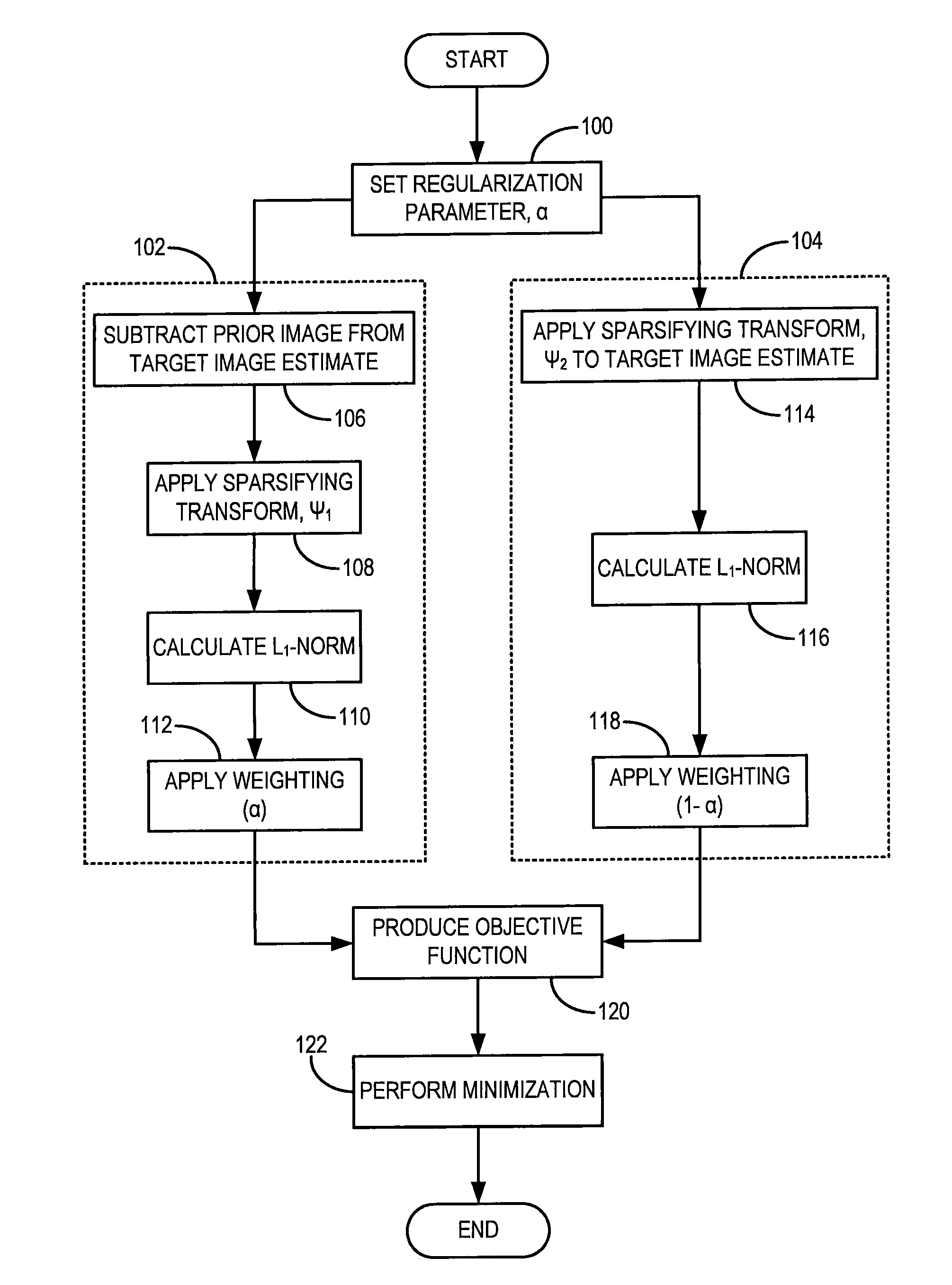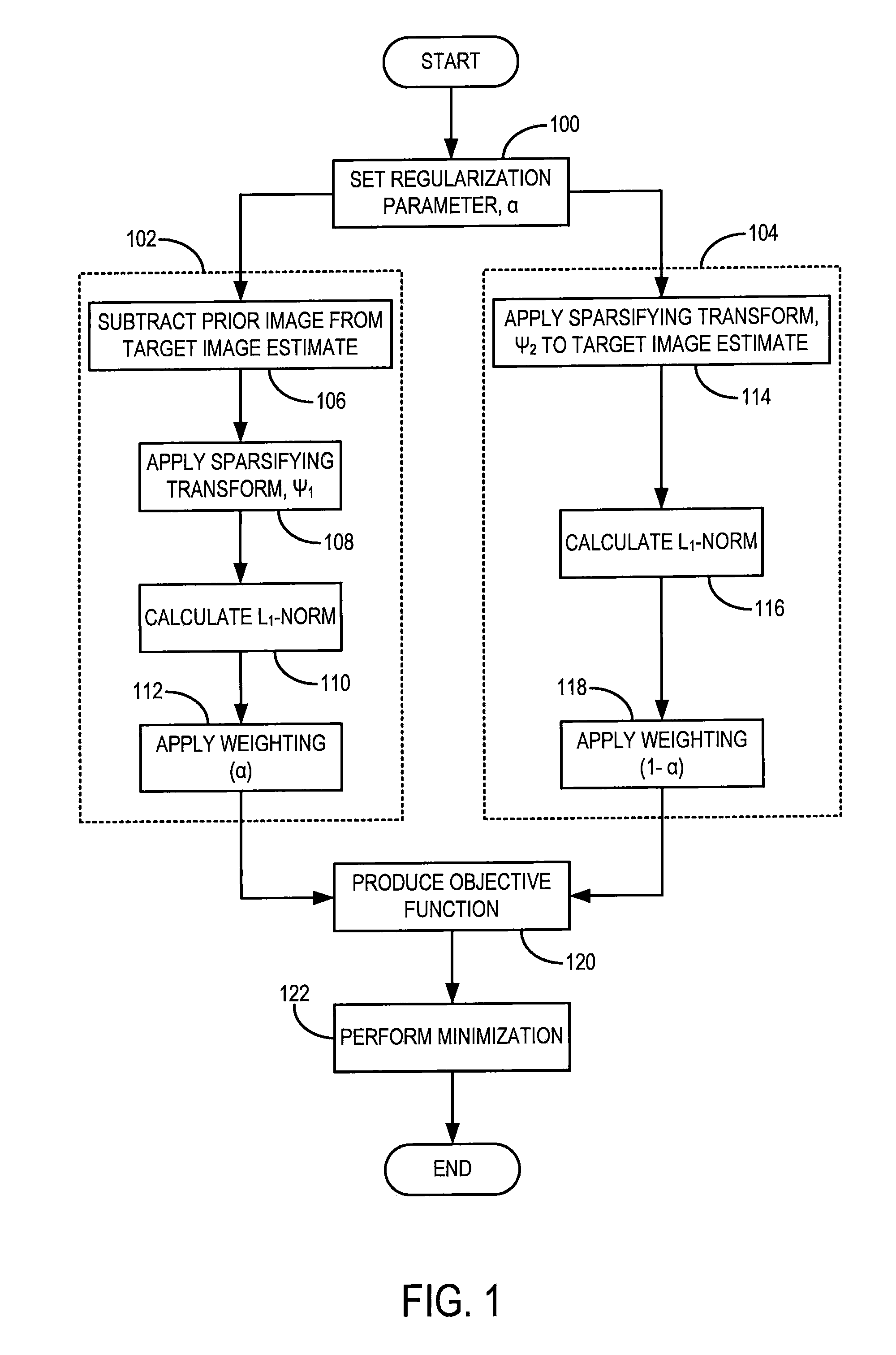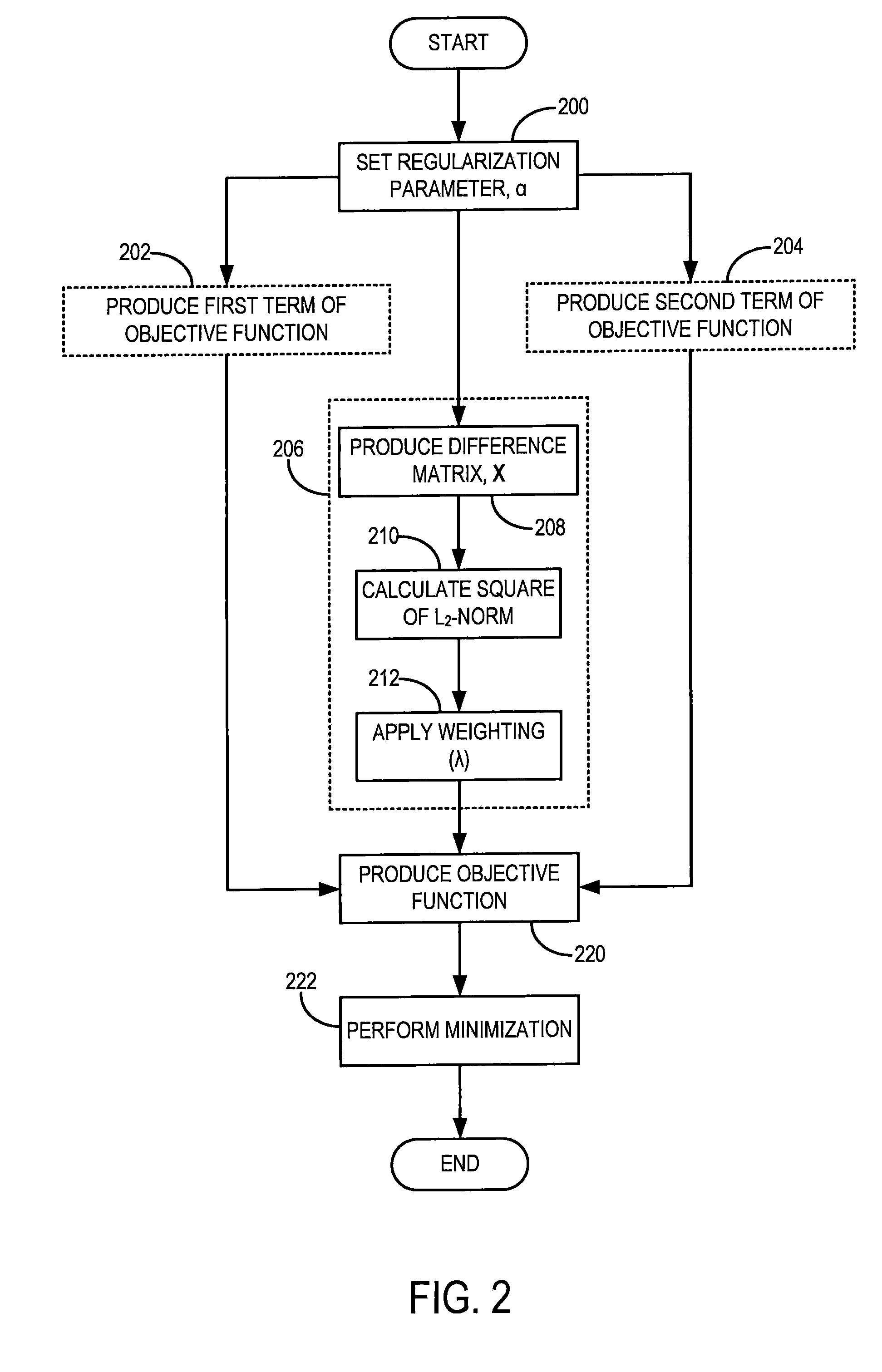Method for dynamic prior image constrained image reconstruction
a prior image and image reconstruction technology, applied in the field of medical imaging, can solve the problems of data gaps and overlap between different sectors, and the uniform distribution of the highly undersampled data set for each cardiac phase, and achieve the effects of increasing the signal-to-noise ratio (snr), increasing the snr, and increasing the temporal resolution
- Summary
- Abstract
- Description
- Claims
- Application Information
AI Technical Summary
Benefits of technology
Problems solved by technology
Method used
Image
Examples
Embodiment Construction
[0039]Generally speaking, the method of reconstructing an image from a set of data includes a series of numerical steps to estimate a desired image, I, from the measured data samples, Y. More specifically, the image reconstruction should fulfill the following consistency condition:
AI=Y Eqn. (1);
[0040]where A is a system matrix. In general, the system matrix, A, can be viewed as a forward projection operator that relates the desired image, I, to the acquired data samples, Y. When dealing with computed tomography (“CT”) imaging, the system matrix can include a reprojection operation, while in magnetic resonance imaging (“MRI”), it can include a Fourier transform operation. The consistency condition of Eqn. (1), put in other words, states that when an image is faithfully reconstructed, the forward operation should substantially mimic the actual data acquisition procedure in order to generate a correct estimate of the measured projection data.
[0041]Turning now to the method of the pre...
PUM
 Login to View More
Login to View More Abstract
Description
Claims
Application Information
 Login to View More
Login to View More - R&D
- Intellectual Property
- Life Sciences
- Materials
- Tech Scout
- Unparalleled Data Quality
- Higher Quality Content
- 60% Fewer Hallucinations
Browse by: Latest US Patents, China's latest patents, Technical Efficacy Thesaurus, Application Domain, Technology Topic, Popular Technical Reports.
© 2025 PatSnap. All rights reserved.Legal|Privacy policy|Modern Slavery Act Transparency Statement|Sitemap|About US| Contact US: help@patsnap.com



